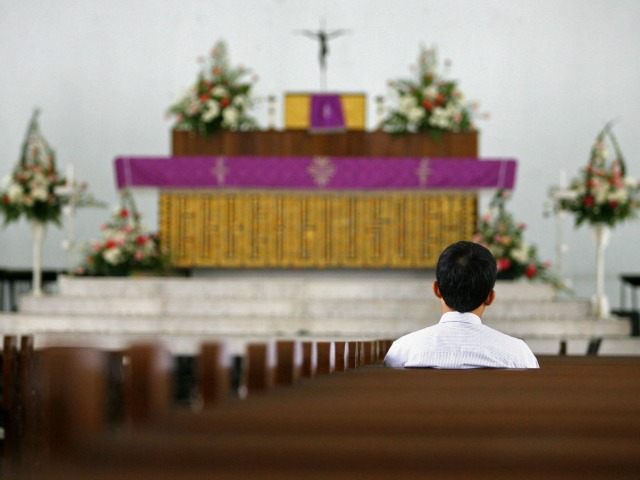According to a Gallup poll, one in five American adults has no formal religious identification, a five percentage-point jump since 2008.
While three-quarters of Americans still identify themselves as Christians, five percent fewer do so than seven years ago. Virtually the entire drop in Christian affiliation has been made up by growth of the religiously unaffiliated, while the number of those belonging to non-Christian religions has remained substantially unchanged.
Among all the religiously affiliated, 94% identify themselves as Christian.
This new survey basically corroborates a study conducted earlier this year by the Pew Research Center, which found an alarming dip in American religiosity and a sharp rise among the religiously unaffiliated, or “nones.”
According to Pew, the only religions to grow in the period from 2007 to 2014 were Islam, which was up a half percent, Hinduism, up 0.3 percent, and the eclectic category of “other religions,” comprising everything from Baha’i to Wicca to Satanism. The real growth was among those professing no religion at all.
The demographics of believers interviewed by Gallup suggest that Christianity will continue to decline in the United States for the foreseeable future.
Affiliation with Christianity bears a direct correlation with age, with the lowest rate of adherence among the young and the highest rate among the elderly. Though some of the younger people will surely become more religious over time, many will not, and thus, the entire U.S. population will continue its trend away from religion, all other things being equal.
Currently, among those between the ages of 18 and 24, only 62% identify as Christian, and 31% claim no religious affiliation. In the 45-49 age group, 79% say they are Christian, and 16% are unaffiliated. When we move higher, into the 85-89 age bracket, 88% claim to be Christian, while only 8% are religiously unaffiliated.
The trend away from religion in America is not a new phenomenon, but has been verifiable for several decades. Gallup surveys in the 1950s found that over 90% of the adult population identified as Christian, and very few claimed no religious affiliation.
America’s loss of religiosity has been accompanied by a liberalization of moral views. Statistics from another Gallup poll last May indicate that Americans’ moral views have grown increasingly more liberal as religious affiliation has declined, with U.S. citizens tending to approve of behavior they would have deemed immoral or sinful just a generation ago.
While the most radical change has been in Americans’ positive moral evaluation of polygamy and human cloning, approval of gay and lesbian relations has also soared in the same time period, with an absolute majority of 63% of the population now seeing nothing wrong with this homosexual behavior, as opposed to 40% in 2001—an increase of 23 percent.
Statistics from the Pew Center’s comprehensive 2015 report on religion in America also revealed that most religious “nones” tend to be undereducated, poor, white males, belying the commonly held belief that irreligiosity tends to rise with education and income.
Those who identify with the label of religiously unaffiliated tend to be high school-educated white males who earn less than $30,000 a year, the study found.
Among the religiously unaffiliated, only a small fraction possesses a college degree, and 45% of religious “nothing in particulars” have a high school diploma or less.
Follow Thomas D. Williams on Twitter @tdwilliamsrome.

COMMENTS
Please let us know if you're having issues with commenting.